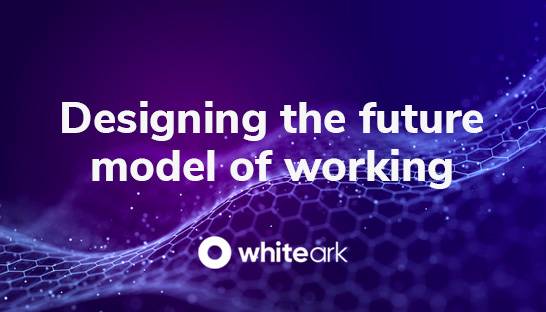[ad_1]
The disruption caused by Covid-19 – including digitization and remote working – has affected the ways in which companies must operate in the future. So what should organizations do to successfully reinvent their future? ways of working? Experts at consultancy Whiteark outline seven key areas to consider.
Working models
In shaping their future ways of working, it is important for organizations to assess their value chain end-to-end and explore new work models to meet business needs. Companies must incorporate flexible models that support remote readiness for each role and individual/team.
Some roles will require constant physical presence, some will require a hybrid model, and others may be completely remote.

The Boston Consulting Group uses a matrix to determine which roles are ready for remote work based on two dimensions—type of work (from routine to creative) and level of collaboration (from independent to collaborative).
The new work model you decide to adopt must ensure that it sustains morale, creativity and productivity. Focusing on desired outcomes and deliverables serve as measures of success, so it’s important to set them for each role/team and ensure there is a controlled and experimental approach to determining what drives productivity.
It is necessary to adjust the inputs accordingly and measure the resulting outputs. Other elements that drive productivity are focus, engagement, connection and networking.
Knowledge
Today’s leaders must be able to manage workforces that are dispersed across multiple locations. Instead of focusing on oversight, leaders must set goals, tasks, and enable teams that align to achieve company goals. Since the acceleration of remote work, the challenges of building cohesion, connecting, and identifying and addressing dysfunctional behavior have become increasingly prevalent for leaders. These responsibilities take up more of managers’ time.
Creating connections across the company, within teams and for individuals is critical to creating a greater sense of purpose. Organizations must provide opportunities for employees to interact with each other through collaboration, training and development, and social communication (virtual/physical).
Each of these elements supports a more efficient and productive workforce by elevating employees to thrive today and in future work models.
Ways of working
Businesses must be agile; they need to support an agile approach to their ways of working, using adaptive tools and techniques to iterate and achieve the most optimal outcome for the company. It is important to have alignment across the organization so that goals can cascade down to teams/individuals.
Further reading: Create the right business culture to achieve business agility.
Companies must support virtual collaboration and give their employees the autonomy to work to achieve the desired results. To keep your employees engaged, meetings need to be short and to the point.
Adaptability
Organizations must be adaptable to build resilience. Adaptability is defined as the ability to adapt to new conditions. Adaptability is an advantage in a highly competitive global economy. Resilience is defined as the ability to recover quickly from adversity; toughness; the ability to get back into shape; and elasticity.
The following areas that affect the way you work need to be built into your adaptive strategies – employee health and wellbeing, operating model and policy updates and change management.
Talent models
Businesses that re-engineer their recruitment process and assumptions will benefit from access to a pool of human capital that would not have been considered pre-Covid-19. Businesses should leverage talent mobility and leverage resources across geographies to benefit from higher quality and diverse candidates.
In addition, organizations should offer learning and training programs to upskill existing employees to meet future business requirements and help retain top talent. Organizations should also consider flexible working models and look for contractors for short-term projects – this will give you the required ability to successfully complete the project.
Work spaces
Since the outbreak of the pandemic, many companies have started optimizing their physical asset portfolio to rethink their requirements from having their employees to sit in a place where their employees can connect.
As most employees move to a hybrid model of working from home and a centralized office, companies need to redesign the employee workspace to have purpose-built zones within the central office, such as central office work zones, collaboration zones, social zones and wellness zones . Home office zones will need digital tools to make interaction seamless across space and time.
Further reading: Organizations should rethink their real estate strategy.
Activators
It is imperative that organizations invest in the tools and technologies necessary to support future ways of working, including digital workspace design, collaboration and remote work tools, cybersecurity and privacy. Equally important is equipping the organization with the right skills: supporting digital learning and upskilling to meet future demands.
[ad_2]


